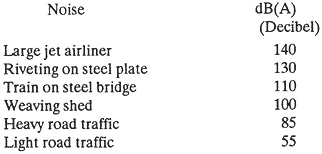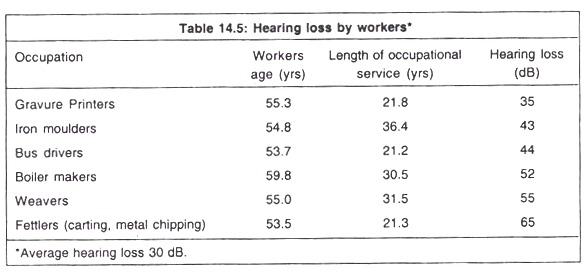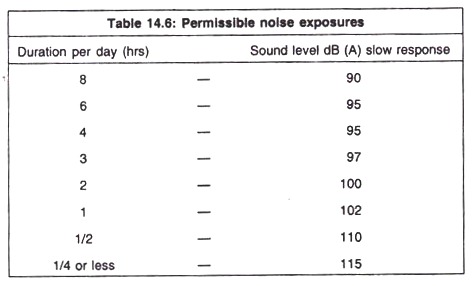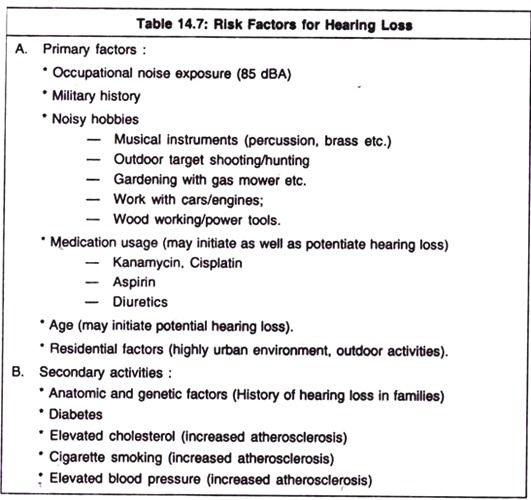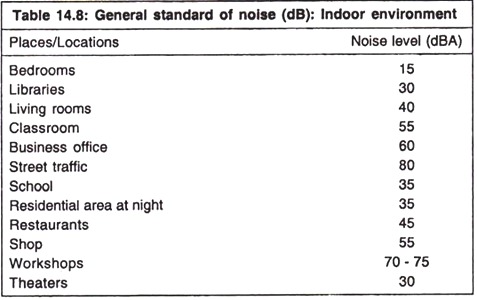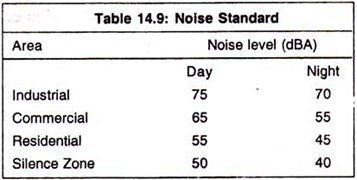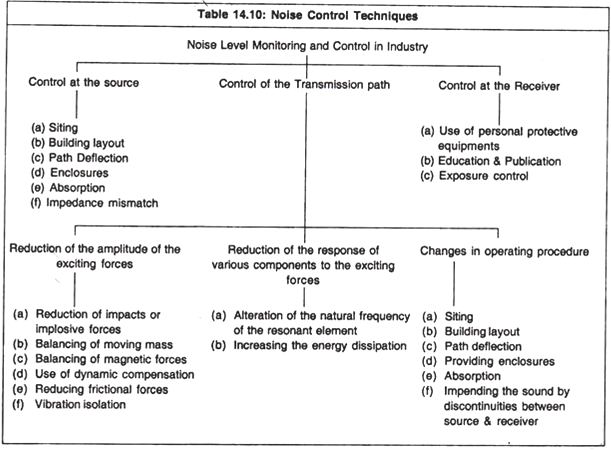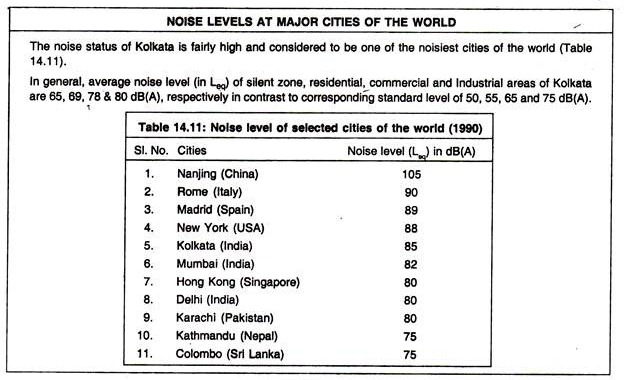The below mentioned article will help you to prepare a science fair project on Noise Pollution:- 1. Meaning of Noise Pollution 2. Sources of Noise Pollution 3. Effects 4. Abatement 5. Control.
Contents:
- Science Fair Project on the Meaning of Noise Pollution
- Science Fair Project on the Sources of Noise Pollution
- Science Fair Project on the Effects of Noise Pollution
- Science Fair Project on the Abatement of Noise Pollution
- Science Fair Project on the Control of Noise Pollution
Science Fair Project # 1. Meaning of Noise Pollution:
Noise is defined as sound without value or any sound that is undesirable by the recipient. In other words, noise can be defined as wrong sound, in the wrong place, at the wrong time.
Noise pollution, thus, refers to the unwanted sound dumped into the atmosphere leading to health hazards. Noise is a physical form of pollution and has no persistent effects on the life-supporting systems but it has direct effects on the recipients.
Noise may be defined as unwanted sound. Sound is caused by any disturbance in the air. Sound travels in air at a speed of approximately 350 m per second. When the pressure waves meet human ear they cause a sensation which we also call sound. Noise is a form of air pollution and like other forms of pollution it affects the quality of life and so can be thought of as a social cost.
The noise producers bear only a part of this cost and for them this is outweighed easily by the benefit they get from their industry. The major part of this burden falls upon people who live around or are present there and they are not directly party to any benefits.
Noise annoys, distracts, disturbs and when exposure to it is sufficient, noise can cause physiological effect leading to deafness. Noise causes disturbance with consequent reduction in productivity, efficiency, accuracy and safety.
Science Fair Project # 2. Sources of Noise Pollution:
Noise is either natural such as thunder or man-made. The main sources of man-made noise in developed urban areas are automobiles such as motors, trucks, buses, scooters, fire engines, police cars, ambulances, etc., factories, industries, trains, air-planes, and accessory noise producers such as horns, sirens, musical instruments, TV, radio, transistors, barking of dogs, shouting, loudspeakers, etc.
There has been a considerable increase in noise from man-made sources during the last 100 years which is now doubling after every 10 years.
Sources of noise may be classified as follows:
(i) Outdoor Sources such as:
a. Road traffic noise
b. Noise around airports [peak level over 110 dB(A)]
c. Construction site noise, and noise from industries.
(ii) Indoor Source:
Indoor source implies noise from within the factory and other places of work.
Given below are the noise levels produced from different sources of noise.
Science Fair Project # 3. Effects of Noise Pollution:
(i) Hearing Damage from Noise Exposure:
There is no doubt that noise pollution can damage the ear and cause temporary or permanent noise-induced hearing loss, depending upon the intensity and duration of the sound level. The most commonly occurring ear damage is caused by continuous periods of high intensity noise. If the ear receives a noise level of over 90 dB in the mid-high frequency range for more than a few minutes, then the auditory sensitivity is, reduced.
The effect is called the temporary threshold shift and can result in a sound of 4,000 Hz frequency requiring a noise level of 20 dB to be heard, instead of 5 dB under normal conditions.
Besides progressive hearing loss, there may be instantaneous damage or acoustic trauma. This is usually caused by very high intensity impulse type noise, that can result from an explosion, or sudden excessive noise of about 150 dB or more.
Studies over many years have shown that, in general:
(i) Hearing damage from exposure to excessive noise is a cumulative process; both level and exposure time are important factors.
(ii) At a given level, low-frequency noise tends to be less damaging than noise in the mid-frequency range.
(iii) Individuals are not all equally susceptible to noise-induced hearing loss.
(iv) The hearing loss that results from noise tends to be most pronounced near 4,000 Hz but it spreads over the frequency range with increased exposure time and level.
Two types of hearing loss from noise exposure are recognized, temporary and permanent. Immediately after exposure to noise at a level of 100 dB, say, there is a marked increase in the minimum level that one can hear (threshold) compared to that there is a gradual recovery of hearing ability. But repeated exposures over extended periods will lead to incomplete recovery and some permanent hearing loss.
This permanent hearing loss depends on noise level and the pattern of exposure and recovery time. Noisy industrial processes and conditions produce hearing loss to the workers involved.
Detailed occupational noise studies by a team from Manchester University in 1971 confirmed this (Table 14.5):
The mechanism of hearing loss by noise can be explained by following ways:
(i) At first the air-borne sound creates a mechanical motion in the middle ear, which is then followed by translation into nerve impulses. Interruptions in this path or damage to any part can affect hearing.
(ii) Noise-induced damage is usually restricted to the translation into nerve impulses. The hair- cell structure is injured by excessive noise exposure. But a short intense blast, however, can damage the ear drum or the rest of the mechanical chain which could be repaired.
The overall permissible noise exposure level is thus presented in Table 14.6:
The various degrees of hearing loss sometime poses a number of effects. For instance < 25 dB hearing loss does not pose any difficulty in hearing, but > 25 dB hearing loss causes hearing difficulty. Only hearing loss > 50 dB requires hearing aid. Complete deafness is noted above 90 dB. The risk factors for hearing loss is presented in Table 14.7.
(ii) Pathological and Psychological Disorders:
Pathological effects can result from particular noise frequencies causing vibration or resonance in materials or people’s bodies. High frequencies, or ultrasonic sound above the normal audible range, can affect the semi-circular canals of the inner ear and cause nausea or dizziness.
Alternatively, very low frequency noise can cause resonance in the body organs, producing the effects of decreased heart beat, variations in blood pressure and breathing difficulties. Mid-audible band frequencies are known to cause resonance in the skull and so affect the brain and nervous system with consequent effects upon thinking and coordination of the limbs.
Non-pathological or psychological noise effects are also variable and very difficult to measure. The mildest effect is often physical or mental fatigue and lack of concentration.
This effect is important in industrial situations, because it results in low efficiency, a reduced work rate, increased absenteeism, and a higher potential for accidents and injuries. In the non-work environment, psychological noise effects impinge upon sleep.
The sound level that cause damages of various body functions are:
Using headphones with high volume, or continuous mobile phones over the years may cause hearing loss too.
Science Fair Project # 4. Abatement of Noise Pollution:
In general, ears have some protective reflexes which have only limited effect against loud noise. By modification of contraction of tympanic membrane, ear can accommodate high pitch sound for a moment. But prolong exposure of high noise level (> 60 dBA) leads to gradual hearing loss in almost all aged people.
On the whole, the variety of noise sources may cause disturbance and annoyance to the general public. It is an unjustifiable interference with ordinary human comfort and well-being. The total extent of the nuisance from various sources of noise in different countries is yet to be ascertained in details.
However, a few countries already set-up some standard for permissible noise level in the indoor environment and to some extent for outdoor situation. The number of statutes and regulations that have been brought into use since the late 1960s does indicate that Government is more aware of the problem of noise.
The general standard as prescribed by Environmental Protection Agency (US — EPA) as well as Department of Environment (DOE, UK) is given in Table 14.8:
There are a number of measures that had been taken up to reduce noise generation at sources, like modification of car engines, modification of aircraft machines, banning of use of air horns, banning of use of loud speakers in residential areas or public places.
In India, in fact. State and Central Pollution Control Broad entrusted for monitoring of noise problems particularly in the major cities. Over the year neighbourhood noise level increased enormously by several unsocial human activities. Even during festival loudness of microphones creates enormous panic situation for the local residents.
Various non-governmental agencies now came forward for public awareness of noise reduction at sources and so also to aware people about the ill-effect of noise. The Society for Clean Environment, Mumbai, is noteworthy among them. However, no legal measures could be taken properly against the offender due to some lacunae of legal procedures.
A revised ambient noise guideline is shown in the appendix.
Arrangement of proper traffic flow, control of traffic speeds by speed-breaker and banning silencer less vehicles etc. are considered to be adopted on an emergency basis in major Indian cities. It was further noticed that roadside planting is also able to absorb sound—at least 6-10 dBA. As such, the major traffic bound road should be planted with trees having dense foliage by which it can reduce the traffic noise by absorption.
A detailed chart on industrial noise control technique is given in Table 14.10:
Science Fair Project # 5. Control of Noise Pollution:
The different methods to control noise pollution are as under:
(a) Method of Measuring Noise Level:
Sound level meters are placed around the source to measure the noise level from different noise sources.
(b) Approach:
Once the noise has been established in the air, there is almost no way in which it can be controlled by means of a power driven device or an electrical noise level controller. Noise control can be achieved mainly by planning and forethought.
As long as there is some method of controlling the noise, the method of approach can be analysed into:
(i) Control (of noise) at the source.
(ii) Control along the path of sound between the source and receiver (listener or victim), and
(iii) At the receiver.
(i) Noise Control at the Source:
The control of noise at the source is usually the cheapest and most reliable method of noise control. Noise from a particular source can often be reduced by means of an enclosure. Sound absorbing material should be included within the enclosure. To control noise, the impacting parts of the machines should be enclosed.
All rotating or impacting machines should be based on anti-vibration mountings. All rigid connections of the machine in the way of electricity, water, air, gas, etc., Should have vibration decouplers around the machine. Internal combustion engines should be properly silenced.
Control of noise at source may be achieved by designing and fabricating silencing devices and their use in air-craft engines, trucks, cars, auto-scooters and industrial machines. Noise at source can be minimised by proper lubrication and better maintenance of machines. Noise producing parts of machines may be insulated in sound proof materials.
Noise producing industries should be installed away from dwelling areas. Use of loudspeakers and amplifiers should be restricted at a fixed intensity and hours of the day. Stuffing of cotton balls in the ears, covering our ears with hands under noise conditions, being away from the sources of noise and using ear plugs to reduce noise pollution to the intensity of about 40-50 dB are personal protection measures.
The Central Pollution Control Board has recommended zone wise ambient noise levels.
They are as follows:
(ii) Noise Control Along Path of Sound:
Once the sound has left its source, it must travel some distance before reaching the place at which the noise nuisance will occur. Common paths for noise are airborne paths such as ducts and corridors and it is usual to include here walls that break up airborne sound paths.
When a noise source is directly coupled to conducting paths such as pipes or air ducts, these paths can carry sound energy. To control noise along the path, one need to consider how sound is transmitted through ducts, corridors, directly through walls and along pipes and through the structure of buildings. In such cases contacting the manufacturers of fans and ducting system can be of much help.
However, the following points may also be kept in mind:
(i) An effective method of increasing the sound insulation of a wall is to construct the wall of a number of separate layers.
(ii) Sound absorbing material has a definite role to play in improving sound transmission loss of a panel.
To control noise along the path in a factory the following, may be employed:
(i) Noise barriers, which involve frequency dependent diffraction effects which depend on the size and geometry of the barrier. Noise barriers do not eliminate sound energy, but merely reflect and/or diffract it somewhere else.
(ii) Enclosures having inside lined with sound absorbing material such as fibre glass.
(iii) Noise refuges which are nearby rooms where the factory produced noise level does not exceed 85 dB (A). Employees can use these rooms for off-time activities, paperwork etc.
(iv) Noise screens limit the spread of noise and provide quiet area at places of sedentary work. Noise screens are used where noise refuges cannot be provided such as in large areas where many processes are occurring.
(iii) Noise Control at the Receiver:
Noise reaches the people and the delicate instruments. The noise level therefore is controlled by treating the area within which the receiver is located. For this, one has to study the acoustics of the situation. The use of sound absorbers is very effective. Soft furnishings, carpets, human beings, windows, resonant panels and so on all contribute to the sound absorption and so does the air within the room.
